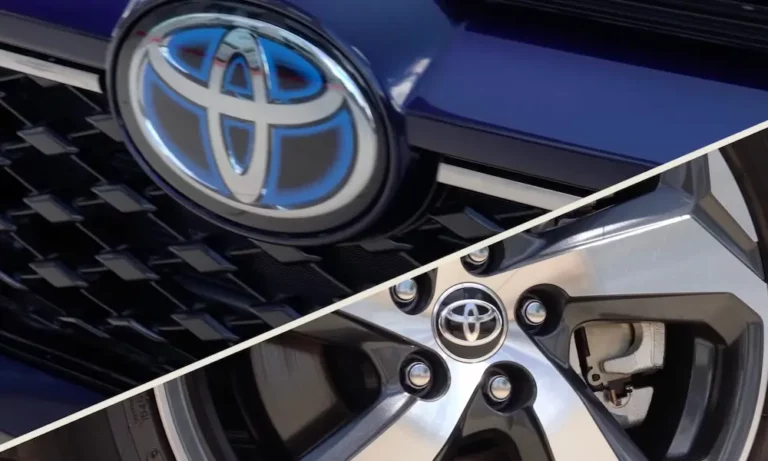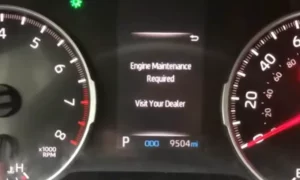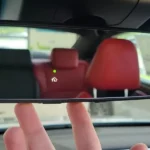Ever looked at those 17 characters on your Toyota’s dashboard and wondered what they mean? Your Toyota’s VIN (Vehicle Identification Number) is like your car’s DNA—it tells you everything from where it was built to what features it has. But cracking this code isn’t just for car enthusiasts or mechanics. It’s a practical skill that can save you money, protect you from fraud, and help you understand your vehicle better.
What Is a Toyota VIN and Why It Matters
A Toyota VIN is a unique 17-character code assigned to every vehicle manufactured by Toyota. Think of it as your car’s fingerprint—no two are exactly alike.
Your Toyota’s VIN isn’t just a random string of letters and numbers. It follows a standardized format that reveals:
- Where your car was manufactured
- What model and body style it is
- Engine type and transmission
- Model year
- Safety features installed
- Production sequence number
Knowing how to read this code can help you verify if a used Toyota is what the seller claims, check for recalls, find compatible parts, and even detect potential fraud.
Where to Find Your Toyota VIN
Your Toyota VIN appears in several places on your vehicle:
- Driver’s side dashboard (visible through the windshield)
- Driver’s side door jamb sticker
- Engine block
- Frame (on trucks and SUVs)
- Vehicle registration card
- Insurance documents
- Owner’s manual
Pro tip: Always check multiple VIN locations to ensure they match. Mismatched VINs can be a red flag for vehicle tampering or fraud.
Breaking Down the Toyota VIN Structure
Let’s decode a Toyota VIN character by character:
The World Manufacturer Identifier (Positions 1-3)
The first three characters identify the manufacturer and its region:
| First Character | Country of Origin |
|---|---|
| J | Japan |
| 1, 4, 5 | United States |
| 2 | Canada |
| 3 | Mexico |
| M | Thailand |
For Toyota specifically:
- JT means a Toyota passenger car from Japan
- 5T indicates a Toyota truck or SUV made in the USA
- 3T represents a Toyota truck built in Mexico
For example, if your VIN starts with “JT,” you’re driving a Japanese-built Toyota. If it starts with “5T,” your vehicle rolled off an American assembly line.
Vehicle Description Section (Positions 4-8)
These positions tell you specific details about your Toyota:
- Position 4: Body style and drivetrain type
- Position 5: Engine code
- Positions 6-8: Model, series, and restraint system information
For instance, if position 5 contains “A,” your Toyota likely has a 2.4L 4-cylinder engine. A “G” in this position often indicates a hybrid powertrain.
Check Digit (Position 9)
This character validates the authenticity of the VIN using a mathematical formula. If it doesn’t match the expected value based on the other characters, the VIN might be fake or incorrectly recorded.
Vehicle Identifier Section (Positions 10-17)
The final eight characters provide:
- Position 10: Model year (L = 2020, M = 2021, N = 2022, etc.)
- Position 11: Assembly plant code
- Positions 12-17: Unique production sequence number
How to Use Toyota’s Official VIN Decoder
Toyota offers an official VIN decoder that provides the most accurate information about your vehicle. Here’s how to use it:
- Visit Toyota’s owner website
- Enter your 17-character VIN
- Click “Decode VIN”
- Review the detailed information about your specific Toyota
The official Toyota decoder will show you:
- Original equipment specifications
- Factory options
- Warranty information
- Recall notices
- Service campaign eligibility
For regulatory information, the National Highway Traffic Safety Administration also provides a free VIN lookup tool that focuses on safety-related equipment and compliance information.
Real-World Example: Decoding a Toyota Tacoma VIN
Let’s analyze a sample VIN: 3TMAZ5CN4NM056789
- 3TM: Manufactured in Mexico by Toyota
- AZ5C: Tacoma Double Cab with a 3.5L V6 engine and 4WD
- N: 2022 model year
- M: Assembled at the San Antonio plant
- 056789: Production sequence number
From this VIN alone, we know it’s a 2022 Toyota Tacoma Double Cab with 4WD and V6 engine, built in Mexico at the San Antonio plant.
Using VIN Decoding for Vehicle History Reports
Your Toyota’s VIN is the key to accessing its complete history. Third-party services like CarVertical use the VIN to compile comprehensive reports that can reveal:
- Previous accidents and damage
- Odometer readings (to check for tampering)
- Title status (clean, salvage, rebuilt)
- Ownership history
- Service records
- Recall compliance
- Theft records
- Use as taxi, police vehicle, or rental
When buying a used Toyota, a vehicle history report is worth every penny. It could save you from purchasing a car with hidden problems or a questionable past.
VIN Differences Across Toyota Models
Toyota’s VIN system has subtle variations depending on the model:
Toyota Camry vs. Toyota Tacoma
A Camry’s VIN typically starts with “4T1” (US-built) or “JTD” (Japan-built), while a Tacoma often begins with “5TF” or “3TM.”
Toyota Hybrid Models
Hybrid Toyotas like the Prius have specific engine codes in position 5. For instance, “Z” often indicates the 1.8L hybrid system found in the Prius.
International Toyota Models
If you’re looking at imported models, they may have different VIN patterns. For example, Toyota vehicles from Thailand often start with “M.”
Using VIN Decoding for Parts Compatibility
One practical use of VIN decoding is ensuring part compatibility. When ordering parts online or at an auto parts store, having your VIN handy means:
- You get the right parts the first time
- You avoid costly returns
- You ensure proper fit and function
Engine components, transmission parts, and electronics are particularly dependent on exact vehicle specifications that your VIN reveals.
Common Toyota VIN Decoding Mistakes to Avoid
Even experienced Toyota owners make these mistakes when decoding VINs:
- Confusing similar characters (1 vs. I, 0 vs. O)
- Missing check digit errors
- Not verifying multiple VIN locations match
- Relying solely on free online decoders (which may be inaccurate)
- Misinterpreting model year codes
For example, Toyota never uses the letters I, O, or Q in VINs to avoid confusion with numbers. If you see these letters in what’s claimed to be a VIN, it’s likely incorrect.
Toyota VIN Decoding for Recalls and Safety Notices
Toyota recalls affect specific VINs, not just model years. To check if your Toyota has any outstanding recalls:
- Visit Toyota’s recall website
- Enter your 17-digit VIN
- Review any open safety recalls or service campaigns
This is especially important when buying a used Toyota, as previous owners may have ignored recall notices.
Using VIN Decoding to Spot Fraud
Car fraud is common, but your knowledge of VIN decoding can protect you. Red flags include:
- VINs that don’t match Toyota’s format
- Check digit (position 9) inconsistency
- VIN plates that appear tampered with
- Different VINs in different locations on the vehicle
- VINs that don’t match ownership documents
If the vehicle details revealed by the VIN don’t match what you see (like engine type or model year), walk away—it could be a scam.
Toyota VINs Before and After 1981
If you’re looking at classic Toyotas, be aware that pre-1981 Toyota VINs follow different formats. Before 1981, Toyota VINs:
- Were shorter (often 13 characters)
- Used different coding systems
- Lacked standardization across markets
For these older vehicles, you may need to consult Toyota-specific resources rather than standard VIN decoders.
Leveraging Your Toyota VIN for Better Resale Value
When selling your Toyota, providing a full VIN decode can boost buyer confidence and potentially your asking price. Highlight:
- Original equipment and packages
- Proper maintenance history tied to the VIN
- Recall compliance
- Authentic Toyota parts used in repairs
- Production details that make your vehicle unique
Smart buyers appreciate this level of transparency and are often willing to pay more for a well-documented vehicle.
Tools and Resources for Toyota VIN Decoding
Beyond Toyota’s official resources, these tools can help decode your Toyota VIN:
- VIN Check Info provides Toyota-specific decoding
- WikiBooks Toyota VIN Codes/Toyota/VIN_Codes) offers detailed breakdowns of manufacturing codes
- NHTSA’s VIN Decoder focuses on safety equipment and compliance
Each tool has strengths for different aspects of VIN analysis, from manufacturing details to safety equipment verification.
Understanding Toyota Production Dates from VINs
While the standard 17-digit VIN doesn’t explicitly show production date, some extended Toyota VIN formats include this information in positions 19-22. However, you can estimate production timeframe from:
- Position 10 (model year)
- The sequential production number (positions 12-17)
- Plant code (position 11)
For more precise dating, Toyota dealerships can access production databases using your VIN.
Conclusion
Your Toyota’s VIN is more than just an identifier—it’s a comprehensive record of your vehicle’s specifications, history, and authenticity. Whether you’re buying, selling, maintaining, or just curious about your Toyota, understanding how to decode your VIN empowers you to make informed decisions.
Next time you glance at that string of characters on your dashboard, remember—you’re looking at your Toyota’s entire story in code. And now you know how to read it.














